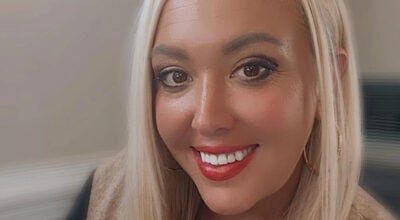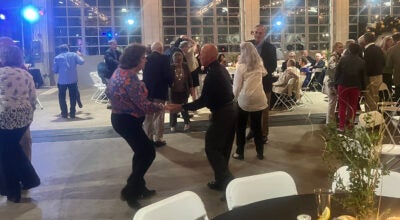Back to school: Early College open for students
Published 12:00 am Wednesday, December 2, 2009
By Sarah Nagem
snagem@salisburypost.com
Meet Morgan Nicholson ó a 14-year-old girl who’s not afraid to speak her mind.
On this, the first day of classes at the new Rowan County Early College, Morgan leads her group of four students in explaining to the rest of the class about myths. They researched homework questions over the summer and came prepared last Thursday.
Morgan speaks plenty loud enough for the other 16 students to hear, corrects her peer when he repeats himself and is eager to throw complex questions to English teacher Julie Stolze.
“So far it’s really good,” Morgan says later of her first day of Early College, an alternative high school for ninth-graders on the campus of Rowan-Cabarrus Community College. Eventually, the school will serve all high school grades.
Morgan continues: “I like that you can sit down and voice your opinion and they don’t stop you or say ‘hush.’ “Morgan might just be the ideal Early College student. In English class, Stolze breaks the students into groups which take turns answering questions. Each person in the group has to speak, and the other groups applaud when they’re done.
Some students avert their eyes as they talk, obviously uncomfortable in the world of public speaking. Others, like Morgan, seem in their element.
Stolze tells her students that as the year progresses, she wants them to stop reading from their notes during presentations. She wants them to speak conversationally when they address the class. It’s part of the Early College model ó project-based learning that engages students with active participation.
That’s education lingo for “No long boring lectures here, thank you very much.”
And that likely suits Morgan just fine.
For some others, though, it’s scary. Brittany Dalton, a 15-year-old North Rowan Middle School graduate, describes herself as a quiet student. She doesn’t feel comfortable speaking in front of people until she gets to know them.
She is uncertain about her first day of school.
“It’s probably going to be a lot of work,” Brittany says.
Along with the challenge of overcoming a fear of public speaking, Brittany is nervous about simply passing her classes.
This school year, students are taking four high school classes ó English, math, science and social studies.
But the lure of Early College is the chance to earn college credit. After four years, students can graduate with a high school diploma and an associate’s degree (or 60 hours of transferrable college credit).
The 72 students who began their Early College careers last week are jumping right into their college classes. This semester, they are taking a college study skills course and a wellness class that will serve as a substitute for high school physical education.
Next semester, they will take college humanities.
Brittany’s apprehension starts to make a little more sense. After all, most of these kids aren’t old enough to drive, let alone make sense of college-level curriculum.
But Early College students are motivated, says Principal Cindy Misenheimer. Her students might not fit neatly into a traditional high school.
“They may be more mature than their peers,” Misenheimer says. “They may be more focused on academics than anything else.”
In the absence of sports teams and other extra-curricular activities, students likely have few distractions.
There are other differences, too, from traditional schools. Early College starts later than most schools ó 9:30 a.m. ó and doesn’t end until 4:30. It’s almost like a workday.
And students don’t go to “classes.” Instead, they attend “learning communities.”
Across the hall from Morgan and Brittany’s English learning community last week, students experimented with gummy worms and Life Savers in the science community.
They hypothesized about the best way to save “Fred” ó a gummy worm who lacked the ability to swim (worms don’t have arms and legs, after all) ó who was on a plastic cup boat and needed a life jacket.
Fourteen-year-old Sam Tenney and his group brainstormed about ways to get that Life Saver (the life jacket) to Fred without drowning him. They only had paper clips to work with, and they couldn’t touch Fred.
So they used a paper clip to lift up the cup and another paper clip to position the Life Saver. Carefully, they tipped the cup, and Fred landed on the Life Saver.
Good news for aquatically impaired Fred. And also good news for Sam, who learned a little something about hypothesizing and reaching conclusions using the scientific method.
Sam enjoys his edible science lesson. It’s much better, he says, than reading about experiments in books.
“If it’s hands on, then you’re actually seeing it. … Plus it’s not near as boring as reading out of a textbook,” he says.
Misenheimer, the former principal at West Rowan Middle School, looks admiringly at the class. This is what Early College is all about.
And more of these schools are popping up across the state. Eighteen Learn and Earn schools are opening this fall in North Carolina, according to Gov. Mike Easley’s office.
The schools all provide tuition-free college credits. At the Rowan County Early College, students will start talking about their career goals in the next couple of weeks.
The whole concept is very exciting to Morgan, who already has plans to attend the University of North Carolina in Wilmington. She wants to become a dentist.
Morgan admits she would have played sports if she had opted for a regular high school. She participated in tennis and wrestling during her middle school years.
But she shrugs off the end of those days. “I’m not worried about it. My education comes first.”




